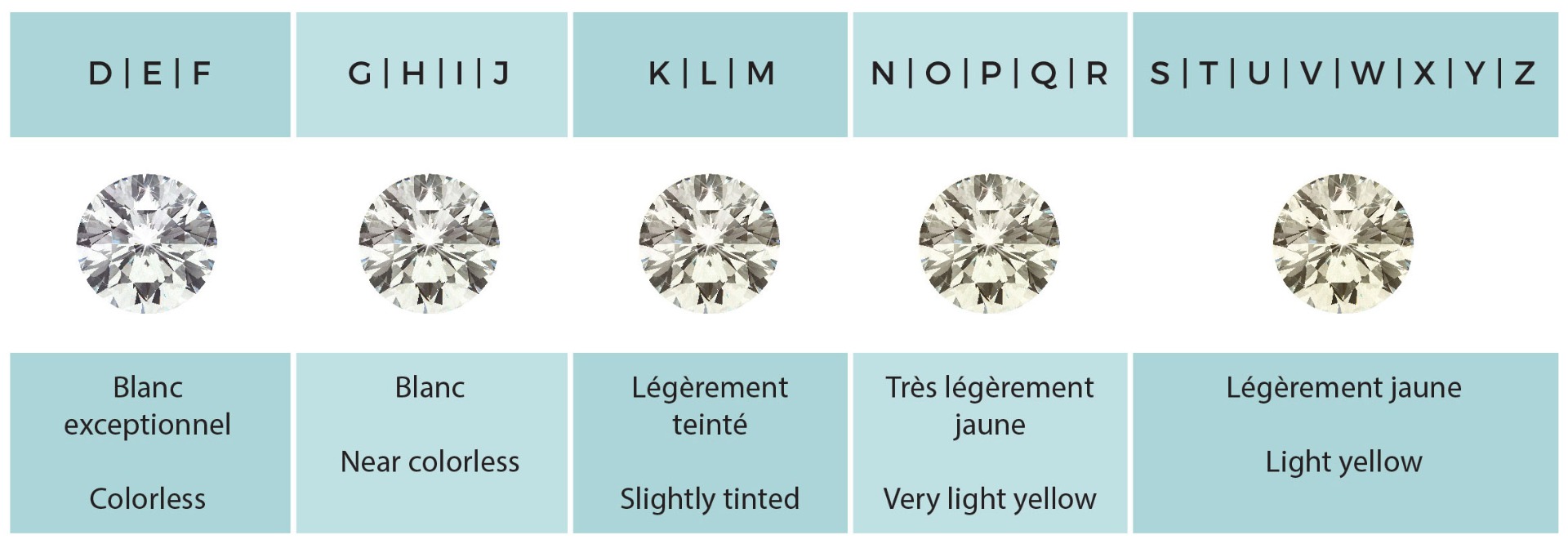Diamond’s color
Between the four main criteria valued to establish the diamond’s rarity, we have its color. To be more accurate, we are measuring the absence of color.

We establish the diamond’s color looking at the GIA scale. The highest grading will be given to a diamond that has no color, which will be rarer. Moreover, there are main categories (colorless, near colorless, etc), and each of them have subcategories (Ex: Colorless: D, E, F). Diamonds that are rarer will then have a “D” color, in the Colorless category. And diamonds that are less rare have a “Z” color, in the Light category.
The diamond will always be graded before we set it in a jewel. Not only because the experts need a specific angle of the pavilion, but the material of the jewel would create shades and influence its color. This said, when a diamond is not a D color, it means that we observe a tint of yellow or brown. From the GIA scale, it is almost impossible for an untrained eye to note the differences above K color. To help you determine choose your diamond and its color, it is always interesting to compare the different categories. We could indicate you two diamonds that are graded with a significant gap, D and L for example. And then, two that are closer, D and G. Why? Even if the color difference can be very subtle, the price will not. Therefore, if you hesitate between two colors, the price increase will maybe help you decide.
Even if the diamond’s color will not change through the years, few components can affect its appearance. To start with, while you are searching for the perfect diamond, it is important to consider in which color the setting will be. Even so it seems insignificant; the setting’s color might neutralise or accentuate your diamond’s color. If you chose a colorless diamond and a yellow gold setting for example, the light reflected by the setting might give your diamond a tint of yellow. Indeed this would ruin the grounds of having a colorless diamond.
To continue with, your diamond’s shape might also have an impact on its color. Generally, shapes can dissimulate and others can reflect the diamond’s color. As a matter of fact, when we select a colorless diamond, we want to focus on its absence of colors. We will then select a round shape for example. In opposition, some shapes will accentuate the stone’s color. They will be use for Fancy colored diamonds or colored gems for example.
As a final point, the diamond’s weight will also make a difference on its appearance. More a diamond is of a bigger size, easier it is to notice the yellow or brown tints.
Finally, the color is for sure an important characteristic of a diamond. To help you decide, we recommend you to look at different styles, materials and settings. This article does not refer to the Fancy Colored Diamonds, which are analysed with complete different scales.

